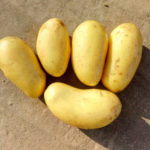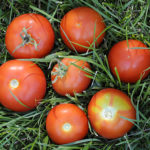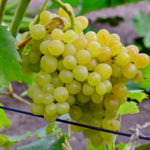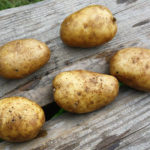Apple variety Kandil Orlovsky
This apple variety was bred relatively recently as a result of the large-scale work of scientists from the All-Russian Research Institute of Selection of Fruit Crops. It was obtained by sowing seeds of a seedling 1924 [(F2 M. floribunda x Welsey) x (F2 M. floribunda x Jonathan)]. The work was carried out under the guidance of Academician E.N. Sedova. The variety was accepted for state testing in 1997, and entered the state register in 2002.
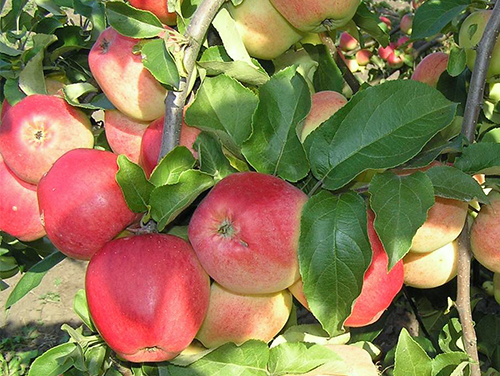
The Kandil Orlovsky apple tree is medium-sized, has a rounded, non-thickened crown. The main branches are located rarely, have a curved shape, in relation to the trunk are located almost at right angles. They droop under the weight of the harvest. The crown does not require intensive shaping pruning.
The root system is well developed. The tree is light-loving. This apple tree is responsive to fertilizers. Prefers moist sandy or loamy soils.
The bark of the trunk, main branches and shoots is smooth, brown-brown in color. Shoots are of medium thickness, geniculate, rounded in cross-section. Small lentils are rarely scattered. The buds of the tree are small, conical in shape, tightly pressed to the shoots, pubescent.
Dark green shiny leaves are small, have the shape of an oblong oval with a helically twisted pointed tip. The leaves are wrinkled with coarse venation. The sheet plate is lowered down. The edge of the leaf is wavy and shallow. The leaves are attached to the shoot with short pubescent petioles of medium thickness. Small needle-like stipules are located at the base of the leaf.
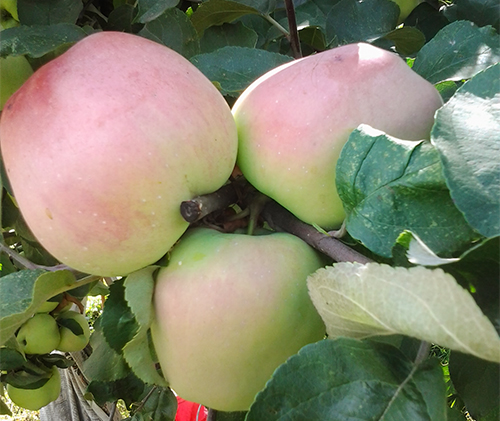
The inflorescence is a simple umbrella with 4 to 6 white-pink buds that bloom into flat, medium-sized flowers. Flower petals are rounded, slightly closed. Pedicels are long and thin. The anthers are higher than the stigma of the pistil. Pistils fused together, softly pubescent.
Kandil Orlovsky begins to bear fruit early. The fruits are harvested already from a 3 - 4-year-old tree. The fruiting type is ringed. The average yield with standard agricultural technology is high and amounts to 30 t / ha. Fruiting is regular, usually annual. However, with age, the yield and quality of the fruits decrease slightly.
This variety has above average frost resistance.
The main advantage of the Kandil Orlovsky apple variety is its absolute resistance to scab. Fruits and leaves are not affected by this disease due to the presence of the Vf gene. This feature greatly facilitates maintenance and allows you to get an environmentally friendly product at the exit.
The fruits are not very large, weighing up to 150 g.
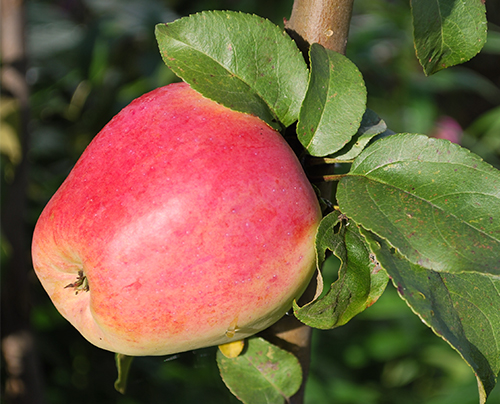
The apples are very attractive in appearance: they have the shape of an elongated cone with a pronounced ribbing, the skin of the fruit is smooth, shines with a gloss. The main color is yellow-green, the integumentary color is a blurred crimson blush, which occupies more than half of the fruit. The apple has few subcutaneous points. They are medium-sized, gray, clearly visible. The apples are relatively uniform in shape. The appearance of the fetus has a score of 4.4 points.
The aroma of apples is pleasant, but weak.
The peduncle is of medium length. The funnel is shallow, narrow, sharp-conical, not rusted. The fruit saucer is deep, narrow, with characteristic grooves. The calyx is always closed. Medium-sized onion-shaped heart. Seeds of brown color are located in closed chambers, are of medium size and ovoid.
The pulp of the fruit is light, with a slight greenish tinge. Juicy, fine-grained, with a pleasant sweet and sour taste. The tasters rated the taste of Kandil Orlovsky apples at 4.3 points.
The fruits of this apple tree are of particular value due to the high content of vitamins C and P. If the average content of apples contains 450 mg / 100 g of vitamin P, then Orlovsky Kandil contains 740 mg / 100 g of vitamin P.
Kandil Orlovsky belongs to winter varieties.Removable ripeness of the fruit falls on the end of September and coincides with the consumer. The keeping quality of apples is high. They keep well until mid-February.
The fruits have a universal purpose,
The main advantages of this apple tree are its good winter hardiness, absolute scab resistance, high yield, good fruit taste and their ability to long-term storage.

